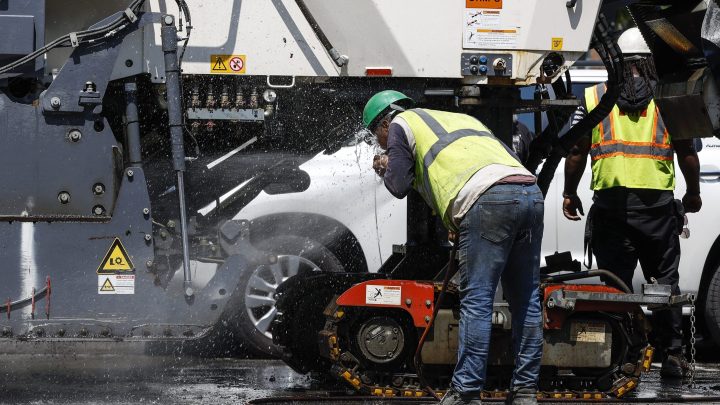
Will workers be protected from extreme heat on the job?

A “heat dome” will be bringing triple digit temperatures to parts of the Western United States this week, potentially topping 120 degrees in some desert areas. It’s the first major heat wave of what’s expected to be another abnormally hot summer in much of the country. Last year was the hottest on record and the deadliest, and some jobs can be especially risky, like construction, farming and logistics.
More than 400 workers died due to heat exposure between 2011 and 2021, according to federal records.
The Occupational Safety and Health Administration has been crafting new heat-specific rules since 2021 at the direction of President Biden. It’s unclear exactly what those rules would be, but they would likely trigger things like required rest and water breaks when the heat index reaches certain thresholds.
“Nobody disputes that overexposure to heat is a hazard,” said Marc Freedman, who is vice president of workplace policy at the U.S. Chamber of Commerce, which has pushed back against early proposals.
He says current general guidelines for rest, water and shade are effective.
If OSHA set stricter thresholds to, say, a heat index of 80 degrees, he says businesses with heat-generating equipment would find it difficult to maintain temperatures.
“Such a regulation could really impose a lot of costs on employers and in some cases, perhaps jeopardize your ability to stay in business,” said Freedman.
The agency appears to be close to releasing its final proposal, says Debbie Berkowitz, who worked for OSHA during the Obama administration and is now a fellow at Georgetown.
“But they have many, many steps they have to go through,” Berkowitz said. “It could take another couple of years.”
It takes an average of seven years for OSHA to create a new national standard. Five states have created their own and several more are close to adopting them, says Anastasia Christman at the National Employment Law Project.
“Part of it is workers have found their voice and their power in the last say, decade, and have really started to understand that the best way to address these problems is to speak out about them together,” said Christman.
But Texas and Florida have preemptively banned local jurisdictions from enacting new rules. And in California, the first state to regulate heat in the workplace, a long-planned extension of protections to indoor sites has stalled over uncertainty about how much it will cost the state.
There’s a lot happening in the world. Through it all, Marketplace is here for you.
You rely on Marketplace to break down the world’s events and tell you how it affects you in a fact-based, approachable way. We rely on your financial support to keep making that possible.
Your donation today powers the independent journalism that you rely on. For just $5/month, you can help sustain Marketplace so we can keep reporting on the things that matter to you.











